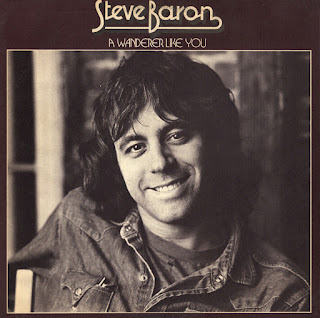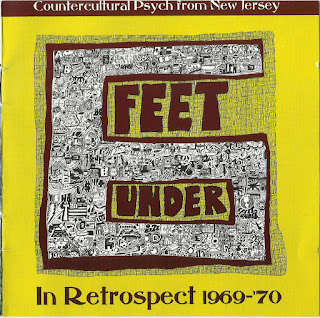Steppenwolf have their origins in a Canadian band called The Sparrow, who released two singles in 1966 with little success. The Sparrow broke up in some acrimony but it wasn't long before constituent parts of it re-formed when an ABC Dunhill staff producer called Gabriel Mekler heard some tapes they had recorded and suggested to their guitarist/ vocalist John Kay that they make some demos. Sparrow guitarist Dennis Edmonton declined to participate in the reunion: he was recording an album of his own compositions, one of which was a song called 'Born To Be Wild'. However, Sparrow drummer Jerry Edmonton (his brother) and keyboardist Goldy McJohn were game. In addition, Kay took on teenage prodigy guitarist Michael Monarch and bassist Rushton Moreve.
The band started rehearsing in a garage beneath Kay's apartment. Kay remains convinced that the dark, distorted and menacing style the band emerged with was the result of the battered and borrowed equipment their impoverishment forced them to use at the time. That style was, by coincidence, similar to the music several different groups were making at the time: Led Zeppelin, The Jeff Beck Group, The Jimi Hendrix Experience and, later, even the Beatles (the electric version of Revolution) were coming up with booming, distorted sounds never heard in rock up to this point.
That form of music was given a name by the lyric of 'Born To Be Wild which Kay and co decided to record after Edmonton (who wrote it under his new pseudonym of Mars Bonfire) dropped off a demo. Edmonton had been inspired by a motorcycle poster bearing the legend "BORN TO RIDE". The phrase he used to convey the sensation of riding a powerful motorcycle - "heavy metal thunder" - was recognised by music journalists as an equally apt description for this new style of distorted music and quickly passed into the language. However, Born To Be Wild was always bound to be remembered for more than providing a label.
Everything about it was perfect, from its intoxicatingly hedonistic sentiment to its soaring melody to its superb ensemble playing. A timeless classic, it became a number two US hit for the band in August 1968 under the name Steppenwolf. The name had been suggested by Mekler who had been impressed by Herman Hesse's celebrated novel of that title. The perception of the song - which climbed to number 30 in the UK the following year - as one which defined the free-spirited age was cemented when it appeared in the movie Easy Rider in 1969. However, Steppenwolf's eponymously titled debut album, released in January 1968 in the US and three months later in Britain, proved that they were more than a heavy metal band.
A Girl I Knew is a piece of vaguely psychedelic pop bookended by harpsichord playing that could not be a greater contrast to Born To Be Wild's growling guitar riffs. In addition, the band's cover of Willie Dixon's Hoochie Coochie Man underlined their blues roots, and Berry Rides Again saw them affectionately pastiching the style of one of the first rock and roll stars. The Pusher, meanwhile, illustrated how Kay had a perspective that was often very different from other radicals of the time: what other rock musician in the LSD-soaked year of 1968 would cover Hoyt Axton's emphatically anti-drugs culture composition? As someone who had had to risk his life at the age of four fleeing from East Germany to the West, Kay was always going to have a slightly different view of the world to North Americans who, while genuinely angry about societal iniquities, had only ever known privilege compared to the inhabitants of Kay's home country.
This propensity to think for himself would later lead Kay to do the unthinkable for a heavy rock band member when he wrote strongly feminist songs for Steppenwolf's 1971 album 'For Ladies On/y'. That, though, wouldn't have come as a surprise to those who concentrated on the lyric of Lost And Found, one of the highlights of the album 'Steppenwolf The Second', which appeared in the US a mere ten months after its predecessor. (Britain would have to wait until January 1969.)
Lost And Found was a genuinely thoughtful and self-critical song about romance and sex completely at odds with the still rather macho attitudes in rock music at the time. Because of their two-albums-a-year recording contract, the band had less time than they would have liked to work on 'Steppenwolf The Second'. For this reason, Mekler contributed one of his own compositions to the album in 28, (as well as co-writing two others with Kay, as he had on the first album).
Mars Bonfire contributed the opening Faster Than The Speed Of Life, which is actually sung not by Kay but by Jerry Edmonton. Despite the album's short gestation period, the band had grandiose artistic ambitions for it: the whole of side two had originally been intended to portray the development of the blues from its cotton field origins to present day rock. The concept wasn't fully realised but glimmers of it can be discerned, especially on the steel guitar opening and 12-bar structure of Disappointment Number (Unknown).
The centrepiece of the album was Magic Carpet Ride, a Kay/Moreve composition which was released as a single. Moreve would never get another songwriting credit with Steppenwolf so must have been especially pleased that it became only second to Born To Be Wild in being the song the public most associated the band with. Contrary to those who read drug connotations into the songwords, they were inspired by the expensive hi-fi Kay had bought with some of his royalties from the first album.
The single certainly went on a magic carpet ride chart-wise, soaring to number 3 Stateside. Its parent album likewise went top five. It was the perfect end to a wonderful year for a band which hadn't even been in existence barely a few months before its start.
by Sean Egan
Tracks
Steppenwolf
1. Sookie Sookie (Don Covay, Steve Cropper) - 3:12
2. Everybody's Next One (Kay, Gabriel Mekler) - 2:53
3. Berry Rides Again (Kay) - 2:45
4. Hoochie Coochie Man (Willie Dixon) - 5:07
5. Born to Be Wild (Mars Bonfire) - 3:28
6. Your Wall's Too High (Kay) - 5:40
7. Desperation (Kay) - 5:45
8. The Pusher (Hoyt Axton) - 5:43
9. A Girl I Knew (Morgan Cavett, Kay) - 2:39
10.Take What You Need (Kay, Gabriel Mekler) - 3:28
11.The Ostrich (Kay) - 5:43
Steppenwolf
* John Kay - Guitars, Harmonica,Lead Vocals
* Rushton Moreve - Bass Guitar, Backing Vocals
* Michael Monarch - Guitars, Backing Vocals
* Goldy McJohn - Hammond Organ, Piano, Electric Piano
* Jerry Edmonton - Drums, Percussion, Backing Vocals
Steppenwolf 2nd1. Faster Than The Speed Of Life (
Mars Bonfire) - 3:10
2. Tighten Up Your Wig - 3:06
3. None Of Your Doing (
Kay, Gabriel Mekler) - 2:50
4. Spiritual Fantasy - 3:39
5. Don't Step On The Grass, Sam - 5:43
6. 28 (
Gabriel Mekler) - 3:12
7. Magic Carpet Ride (
Kay, Rushton Moreve) - 4:30
8. Disappointment Number (
Unknown) - 4:38
9. Lost And Found By Trial And Error - 2:20
10.Hodge, Podge, Strained Through A Leslie - 2:42
11.Resurrection - 3:43
12.Reflections (
Kay, Gabriel Mekler) - 1:30
All tracks composed by
John Kay except where indicated
Steppenwolf* John Kay - Lead Vocals, Guitar, Harmonica
* Michael Monarch - Lead Guitar
* Goldy McJohn - Organ, Piano
* Rushton Moreve - Bass
* Jerry Edmonton - Drums, Vocals
Related Acts1968 John Kay and the Sparrow1972 John Kay – Forgotten Songs and Unsung HeroesFree Text







































